Tomorrow morning might be a good time to call for extra celestial traffic control. A slip of a crescent Moon will join a passel of planets in the dawn sky for the first of several exciting conjunctions over the next few days.
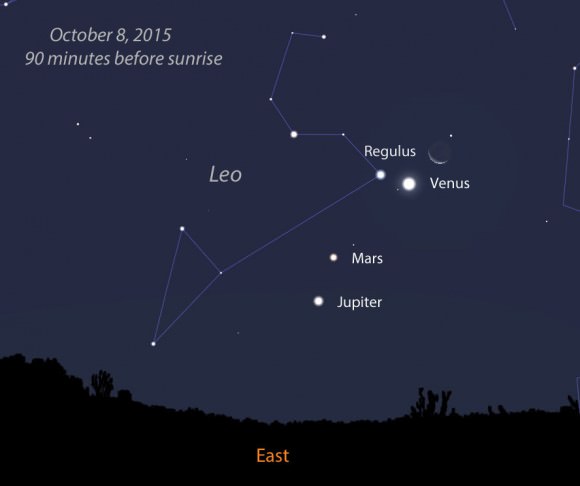
In the space of three mornings beginning tomorrow, four planets, the Moon and the star Regulus will participate in six separate conjunctions. Here’s how it’ll play out. Time are shown in UT / Greenwich Mean Time and Central Daylight and 1° equals two full moon diameters:
- October 8: Venus 2.5° south of Regulus at 18 UT (1 p.m. CDT)
- October 8: Regulus 3.1° north of the moon at 19 UT (2 p.m. CDT)
- October 8: Venus 0.6° north of the moon at 20 UT (3 p.m. CDT)
- October 9: Mars 3.2° north of the moon at 14 UT (9 a.m. CDT)
- October 9: Jupiter 2.5° north of the moon at 21 UT (4 p.m.)
- October 11: Mercury 0.8° north of the moon 11 UT (6 a.m. CDT)
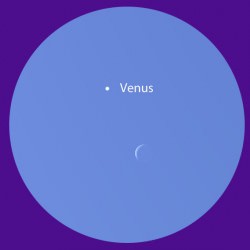
Since several of the events occur in the middle of the afternoon for skywatchers in the Americas, here’s an expanded viewing guide:
* Thursday, October 8: Skywatchers will see Venus pass 2.5° south of Leo’s brightest star Regulus with a cool crescent moon a little more than 3° to the west of the brilliant planet. If you live in Japan and the Far East, you’ll see a splendidly close conjunction of the moon and Venus at dawn on October 9, when the pair will be separated by a hair more than one moon diameter (0.6°). At nearly the same time, the moon will be in conjunction with Regulus.
Observers in Australia and New Zealand will see the Moon occult Venus in a dark sky sky before dawn (or in daylight, depending on exact location) on the 9th. Click HERE for information, times and a map for the event.
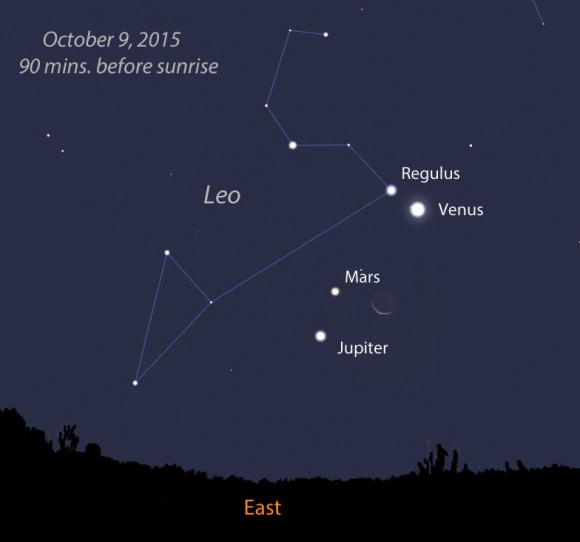
* Friday, October 9: An even thinner moon passes about 3° north of Mars in the Americas at dawn and approximately 4° from Jupiter. Watch for the three luminaries to sketch a nifty triangle in the eastern sky 90 minutes to an hour before sunrise. Venus will gaze down at the planetary conclave 10° further west.
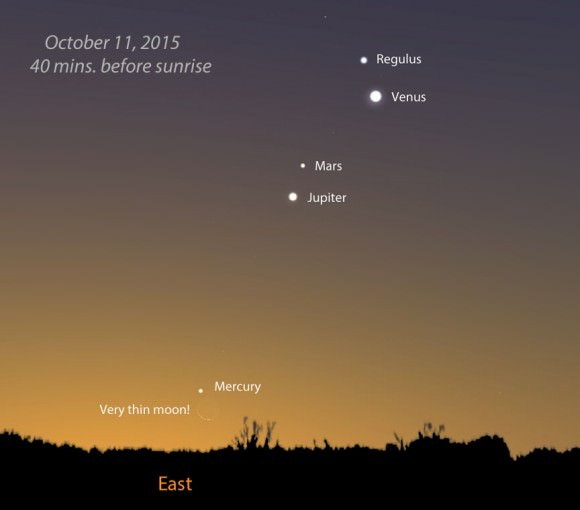
* Sunday, October 11: Mercury, which has quietly taken up residence again in the dawn sky, hovers 0.8° above a hair-thin moon this morning at 6 a.m. CDT. Best views will be about 45 minutes before sunrise, when the pair rises high enough to clear distant trees. Bring binoculars to help you spot the planet.
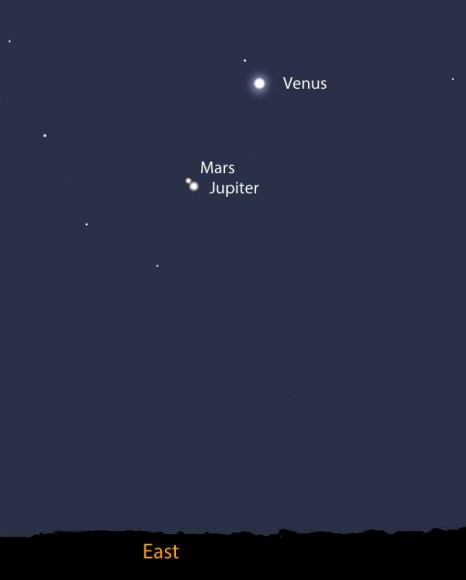
You’re thinking, why does this all have to happen in the morning? Thankfully, sunrise occurs around 7 a.m. for many locations, so you can see all these cool happenings in twilight around 6 a.m. — not terribly unreasonable. And now that the The Martian has finally hit the movie theaters, what better time to see the planet in the flesh? By pure coincidence, the location of stranded astronaut Mark Watney in the fictional account — Acidalia Planitia (Mare Acidalium) — will be facing dawn risers across the Americas and Hawaii this week.
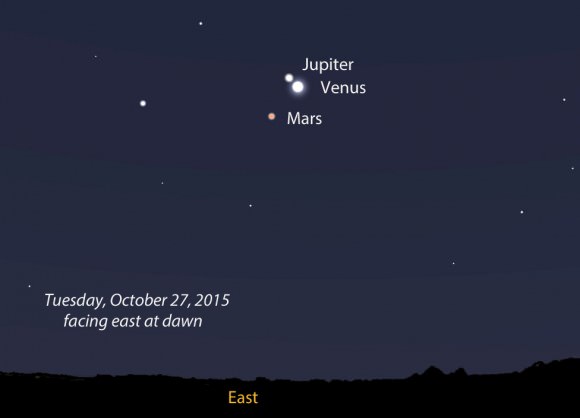
Dare I say this string of continuous conjunctions is only a warm-up for more to come? Earth’s revolution around the Sun quickly brings Jupiter higher in the eastern sky, while Mars races eastward as if on a collision course. The following Saturday on October 17, the two will meet in conjunction less than 1/2 degree (one Full Moon width) apart. Very nice!
But it gets even better. On Tuesday morning, October 27, you’ll see all three planets huddle at dawn. One degree will separate Jupiter and Venus with Mars bringing up the rear several degrees further east. Feast on the view because there won’t be a more compact arrangement of three planets again until January 10, 2021.


Thank you Bob.
A very special individual would say that this is quite the time warp.
😉
Dang I wish I had an eastern horizon… Here in the canyon my horizon window is nonexistent which makes early morning apparitions a bit difficult. It might be worth it for me to pull an ‘all-nighter’ up on the mountain to see some of this? Hmm…
I started using my homemade 12 1/2″ scope early last spring and have almost ‘made the round’. Lately I’ve been staying up late to catch my first views of the winter stars. Saw the Double Cluster in Perseus for the first time the other night. I’ve seen it hundreds of times in my 4″. Now.. I don’t know when I’ll ever even take the 4″ out?
Aqua,
I know the feeling. Keep the 4-inch for those nights when you need a quick, portable scope. Didn’t know you were in a canyon. Worth picking an event and going for a drive I’d say.
Fantastic work-from-home opportunity for anyone… Start working for three to eight hr a day and get from five thousand dollar each month… Regular weekly payments…
Amazing!!! I don’t think I’ve ever seen Venus as bright as it is this morning! (6am so. cal)
It was almost like for awhile there the light from the bright side of the moon (facing away from us) and the Earth were reflecting back and landing on Venus and adding to it’s brightness. Is that possible?
Hi avcpl,
Sounds like you had a great morning! As for Venus’ brightness – it’s all its own. No moonlight can reflect back or augment the planet’s brightness. Though they appear close together in the sky, it’s only line-of-sight. Like the Earth and Venus, they’re millions of miles from each other.
lol, yeah didn’t really think so but I was grasping to figure out why it seemed so exceptionally bright when I saw it.
I suppose the most likely answer is it was some kind of illusion based on the relative brightness of the surrounding objects.
Thanks!